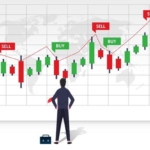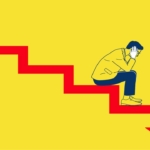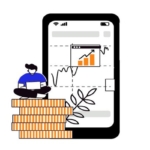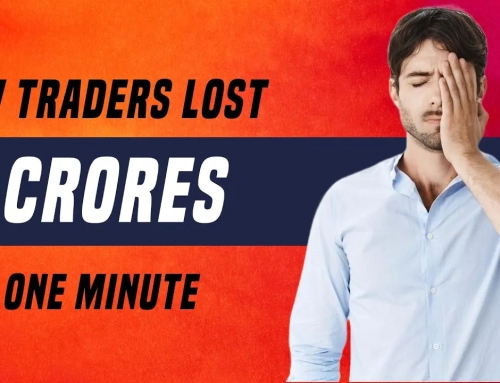What Is Circular Trading ?
Explanation
Circular trading is a type of fraud in the stock market where the same number of buy and sell orders are placed at the same time with the same price for a stock.
This leads to an increase in trade volume without any change in the ownership of the shares.
This fraudulent activity cannot be undertaken by a single person. It is done by collusion among a group of investors or stock brokers.
These trades are done with the intention to inflate or deflate a stock price.
Impact of circular trading on the stock price
Let’s understand circular trading with an example:
Suppose there are three brokers X, Y, and Z who form collusion to inflate the price of a company called “ABC Ltd”.
Broker X sells the shares of “ABC Ltd” to broker Y who in turn sells the same shares to broker Z who then sells back the same shares again to broker X before the closing of the trading session.
These transactions among brokers X, Y, and Z for stock “ABC Ltd” are carried at the same price and for the same number of shares.
Doing this increases the trading volume of the stock without any change in the ownership of the shares.
However, increased trading volume in “ABC Ltd” gets the attention of the market creating an unreasonable level of excitement and hype around the stock.
Individual investors unaware of the fraudulent activity taking place end up investing in “ABC Ltd” causing the stock price to shoot up.
Circular trading is used not only to inflate the stock price but also to show that a stock has liquidity and acts as proof of interest among investors in the market.
Impact of circular trading on the overall market
Circular trading severely impacts the market. Increased trading volume in any stock is a sign of something important like the launch of a new product or a change in management.
Many investors take increased trading volume as a sign of some important announcement and invest their money in order to benefit from the expected rise in share value.
Sooner or later, the stock starts tumbling down when the stock is unable to justify its valuation. The investors incur huge losses as the increased trading volume was just a bluff created through circular trading.
Traders whose strategies are based on the volume activity of stock are the ones who fall prey to circular trading.
When fraudulent act of circular trading is discovered, it shakes the confidence of investors in stocks and the public trust in the stock market as a whole starts declining.
Real-life examples of circular trading
In the year 2010, SEBI banned 16 people from buying and selling in the securities market after they were found guilty of circular trading.
They were found to be trading in high volumes among themselves in a synchronized manner.
They targeted some of the most well-known companies in India like Ushdev International, Asian Star Co, KSL & Industries, and Rasi Electrodes.
This scandal caused investors to lose faith in the stock market which affected not only the target companies but also the other companies listed in the market.
A fine of 2 lakh rupees was imposed by SEBI on the brokers involved in the scandal.
Conclusion
SEBI has been undertaking different measures to prevent circular trading.
One such measure is to prevent trading in high volume in a short time. A price band is fixed for the stock which allows the stock to move only within this price band during the day.
There are many other methods being adopted to curb circular trading but it cannot be completely eliminated.
It is very difficult to spot circular trading taking place unless significant damage has already occurred. One good way to recover losses incurred is by imposing heavy penalties on the offenders.
Source of data
Howdy!
If you’re here for the first time, let’s get introduced.
VRD Nation is India’s premier stock market training institute and we (Team VRD Nation) are passionate about teaching each and every aspect of investing and trading.
If you’re here for the first time, don’t forget to check out “Free Training” section where we have tons of free videos and articles to kick start your stock market journey.
Also, we got two awesome YouTube channels where you can continue the learning process.
Must-Read Articles
What Is Circular Trading ?
Explanation
Circular trading is a type of fraud in the stock market where the same number of buy and sell orders are placed at the same time with the same price for a stock.
This leads to an increase in trade volume without any change in the ownership of the shares.
This fraudulent activity cannot be undertaken by a single person. It is done by collusion among a group of investors or stock brokers.
These trades are done with the intention to inflate or deflate a stock price.
Impact of circular trading on the stock price
Let’s understand circular trading with an example:
Suppose there are three brokers X, Y, and Z who form collusion to inflate the price of a company called “ABC Ltd”.
Broker X sells the shares of “ABC Ltd” to broker Y who in turn sells the same shares to broker Z who then sells back the same shares again to broker X before the closing of the trading session.
These transactions among brokers X, Y, and Z for stock “ABC Ltd” are carried at the same price and for the same number of shares.
Doing this increases the trading volume of the stock without any change in the ownership of the shares.
However, increased trading volume in “ABC Ltd” gets the attention of the market creating an unreasonable level of excitement and hype around the stock.
Individual investors unaware of the fraudulent activity taking place end up investing in “ABC Ltd” causing the stock price to shoot up.
Circular trading is used not only to inflate the stock price but also to show that a stock has liquidity and acts as proof of interest among investors in the market.
Impact of circular trading on the overall market
Circular trading severely impacts the market. Increased trading volume in any stock is a sign of something important like the launch of a new product or a change in management.
Many investors take increased trading volume as a sign of some important announcement and invest their money in order to benefit from the expected rise in share value.
Sooner or later, the stock starts tumbling down when the stock is unable to justify its valuation. The investors incur huge losses as the increased trading volume was just a bluff created through circular trading.
Traders whose strategies are based on the volume activity of stock are the ones who fall prey to circular trading.
When fraudulent act of circular trading is discovered, it shakes the confidence of investors in stocks and the public trust in the stock market as a whole starts declining.
Real-life examples of circular trading
In the year 2010, SEBI banned 16 people from buying and selling in the securities market after they were found guilty of circular trading.
They were found to be trading in high volumes among themselves in a synchronized manner.
They targeted some of the most well-known companies in India like Ushdev International, Asian Star Co, KSL & Industries, and Rasi Electrodes.
This scandal caused investors to lose faith in the stock market which affected not only the target companies but also the other companies listed in the market.
A fine of 2 lakh rupees was imposed by SEBI on the brokers involved in the scandal.
Conclusion
SEBI has been undertaking different measures to prevent circular trading.
One such measure is to prevent trading in high volume in a short time. A price band is fixed for the stock which allows the stock to move only within this price band during the day.
There are many other methods being adopted to curb circular trading but it cannot be completely eliminated.
It is very difficult to spot circular trading taking place unless significant damage has already occurred. One good way to recover losses incurred is by imposing heavy penalties on the offenders.
Source of data















![What is Virtual Contract Note [Zerodha]](https://www.vrdnation.com/wp-content/uploads/2023/10/maxresdefault-virtual-note-500x383.jpg)



Leave A Comment